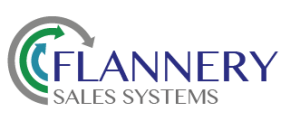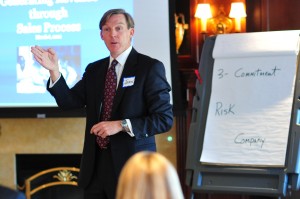 What makes a great sales leader? Ask this question to a dozen sales executives and you may get a dozen different answers. Many great sales leaders rise up through an organization by being top performers themselves and leading by example. Others are known for recruiting top talent, providing excellent coaching and mentorship, or successfully aligning sales incentives with company goals.
What makes a great sales leader? Ask this question to a dozen sales executives and you may get a dozen different answers. Many great sales leaders rise up through an organization by being top performers themselves and leading by example. Others are known for recruiting top talent, providing excellent coaching and mentorship, or successfully aligning sales incentives with company goals.
All of these are important; however, one of the most vital traits of a sales leader is one that often goes unnoticed. That is their ability to tap into innovation or “out-of-the-box” thinking to help their reps unstick a stalled deal. Removing roadblocks for your team will help them achieve their monthly targets and, in turn, help your organization meet or exceed revenue goals.
But just how does a sales leader tap into that innovative thinking? One of the most effective ways we have found is through the use of a tool called SCAMMPERR. SCAMPPERR is an acronym for nine thinking techniques that help you come up with creative solutions to problems. We’ve seen it shortened to SCAMPERR or even SCAMPER, but in our minds, using the full set of techniques gives you the best opportunity for creative problem solving.
How to Use SCAMMPERR
When you and a sales rep are trying to remove roadblocks in important deals, use the cues below to force yourselves to think in an arbitrarily different way.
S Substitute: What could be substituted in the situation to make the solution work?
C Combine: How could ideas or elements be combined to provide a solution?
A Adapt: How could the solution be adapted to make it work?
M Magnify: How could ideas or elements be magnified to make the solution work?
M Modify: What could be modified within the solution to make it work?
P Put: What might be put to a different use to make the solution work?
E Eliminate: What could be eliminated from the situation to allow the idea to work?
R Rearrange: How could elements be rearranged to enable the solution to work?
R Reverse: How might the solution be turned around to make it work?
Putting SCAMMPERR into Action
So how might you use SCAMMPERR to work with your sales team to remove roadblocks in stalled deals? Let’s look at an example.
When I was leading a team selling daily deals to local businesses, one of my reps was trying to sign a contract with a large amusement park, but the deal was stalled. The business was unwilling to significantly discount their ticket prices as they felt it would be too costly and would tarnish their brand. This had the potential to be a huge deal for us, but as the objections seemed insurmountable, my rep and I sat down together to see if we could come up with an innovative way to get the deal through. We used SCAMMPERR to guide our brainstorm.
After going through all the cues, it was “C-combine” that eventually led us to our answer. What if we combined admission tickets to the park with a local hotel stay? Local hotels already offered the park discounted room rates, so if we could get the hotel to kick in a bit more of a discount along with some other perks such as a free meal and parking, we could come up with a very compelling package price. Because the discount was now being applied to several businesses and not to the amusement park alone, they were not as concerned about negative impact on their brand. We presented our solution to the business and they were delighted. The deal closed and produced more revenue than any other offer that year.
Do you have examples of sales leaders using innovation to help their teams unstick stalled deals? Do you foster out-of-the-box thinking in your sales organization, and if so, have you used a tool like SCAMMPERR to drive results? We’d love to hear from you!










